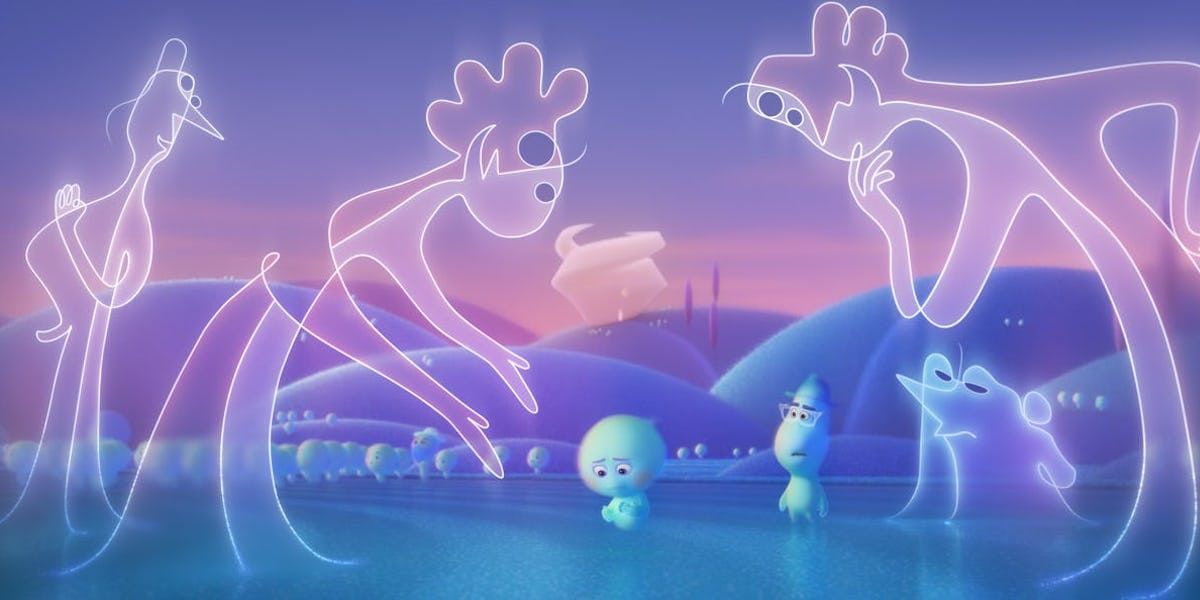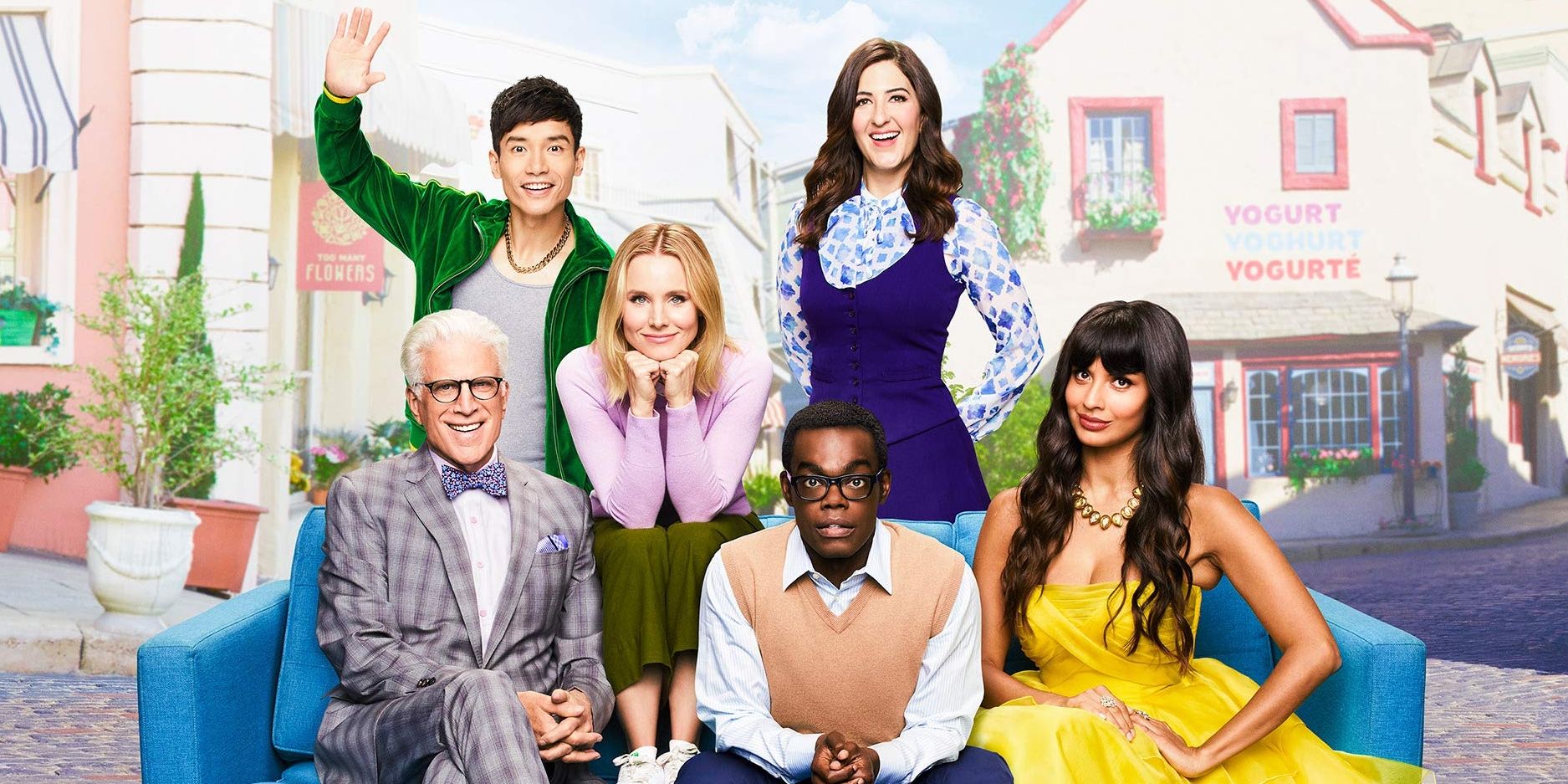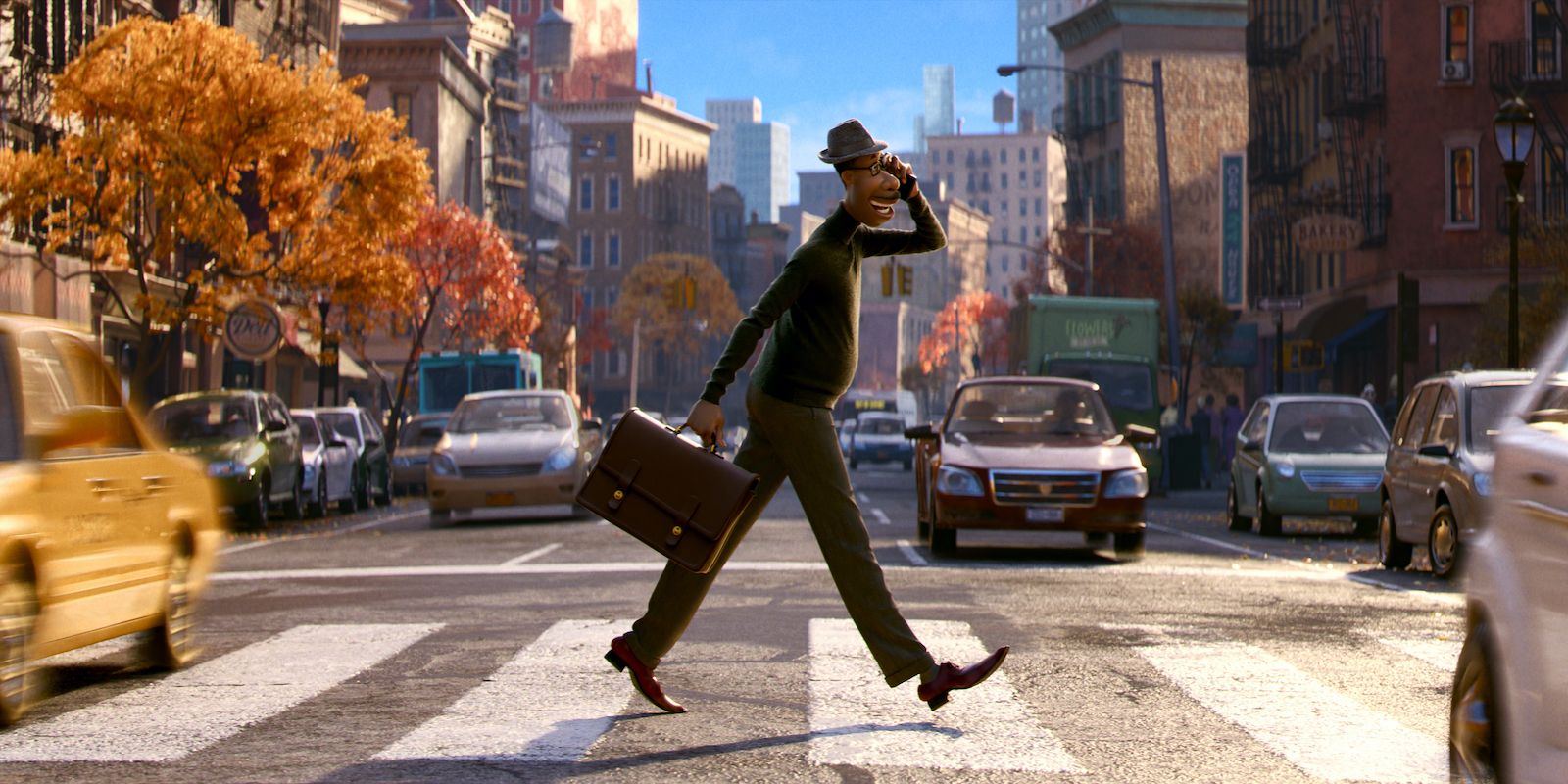WARNING: The following contains spoilers for Soul, now available on Disney+.
Soul presents a light-hearted look at the afterlife when an aging jazz musician meets his untimely death and tries to sneak back to Earth. In the Pixar film, Joe Gardner's (Jamie Foxx) soul gets caught in the bureaucratic web of the afterlife realms, which has a lot of similarities to another charming and organized afterlife in NBC's The Good Place.
The Good Place told the story of Eleanor (Kristen Bell), a woman who was seemingly put into the afterlife for good people, even though she believes it to be a mistake. From a narrative standpoint, Soul uses the same concept of upsetting the cosmic order by placing a soul where it doesn't belong. In the movie, Joe is supposed to stay on the conveyor belt that would take him to the Great Beyond, but he resists and falls off, ultimately landing in the Great Before. Here, he assumes the identity of a mentor for new souls before they head to Earth to become human. Eleanor also assumes the identity of another woman by the same name, making for similar hilarity of cosmic imbalance.
Soul's Biggest Unanswered Mysteries
It's interesting how both stories give the afterlife a bureaucratic nature in order to offset the seriousness of death. The Good Place is replete with a city architect, named Micheal ( Ted Danson), who acts as a mayor, and an omniscient assistant named Janet (D'Arcy Carden). The new souls go through an initial meeting in an office with Micheal, where their lives are stored in folders. Later, viewers see the Bad Place as a typical office setting with mean bosses, water coolers, cubicles and staff meetings.
Soul takes the same approach, giving the Great Before an initiation meeting where new souls are paired with their mentors; Joe is even given a name tag to wear like an administrative retreat. New souls are assigned to houses that give them their own unique set of personality traits, making an organic process organized and efficient. There is the Hall of Everything, where souls can learn new skills and hobbies that gives them their spark. This location acts like a job fair booth at a college, further departmentalizing the ineffable aspects of the universe into a familiar form.
The most striking resemblance between Soul and The Good Place, though, is the use of all-knowing cosmic entities with charming personalities. Soul uses beings called Jerry as camp counselors to shuttle new souls around with chipper attitudes, while The Good Place uses assistants named Janet, who are equally as helpful and also present themselves in a humanoid form so that souls can perceive them as non-threatening.
Soul and Wonder Woman 1984 Are Jazz and Pop Versions of the Same Story
No office setting would be run smoothly without some type of hierarchy, and neither would the afterlife. The Good Place weaves an intricate web of accountants, bosses and cosmic judges that have to go through the same set of laborious channels to get anything done, much like a governmental office. Soul also features accountants that tally up the balance of souls entering the Great Beyond using an abacus. Joe cannot return to earth unless he has a boarding pass, which is also needed in The Good Place. In truth, both stories give the afterlife rules and structure to make a vast and ethereal concept like cosmic order seem more grounded and comforting.
On the reverse side of souls entering the afterlife, both The Good Place and Soul feature a non-human entity visiting earth and learning to be human. The Good Place's Micheal is a demon in disguise, but after spending so much time studying the chaotic and endearing mess that is a human, he falls in love with their foibles. Micheal visits Earth and is in awe of everyday phenomena, much like a newborn baby. In the same manner, 22 is a pre-human entity who finally visits Earth and can't help but become wide-eyed at the things Joe takes for granted. 22 gets excited over pizza, a barber giving her a lollipop and just walking around looking at the sky. These human entities remind the audience just how beautiful the life around them is when they don't take it for granted.
The afterlife doesn't have to be envisioned as a daunting place, especially when concepts like cosmic order are personified in a way that mimics mundane societal constructs like an office. Soul shares The Good Place's view of tallying up souls, and the hijinks of what happens when humans mess with the natural order of the universe. In the end, both stories depict how life on Earth can be just as precious as anything beyond it.



